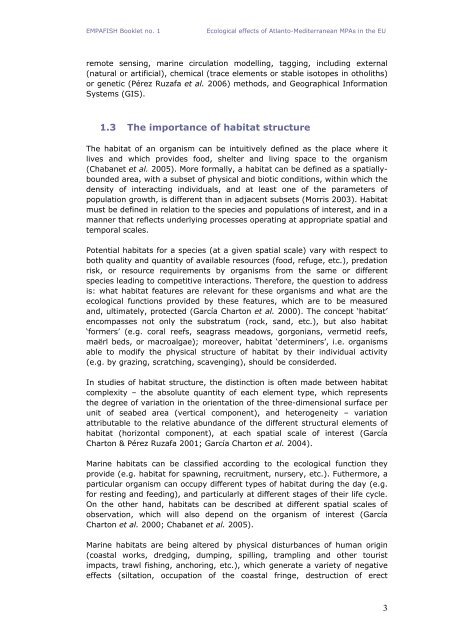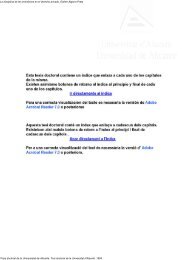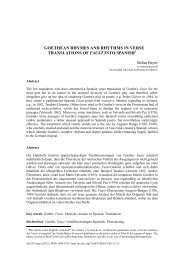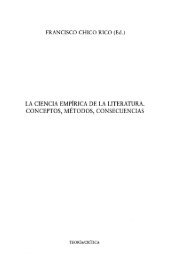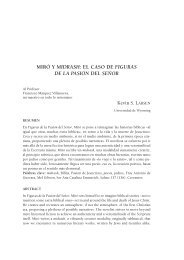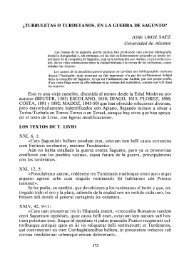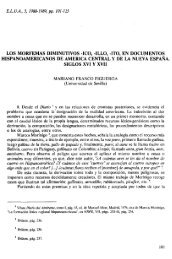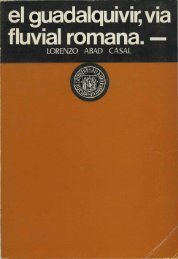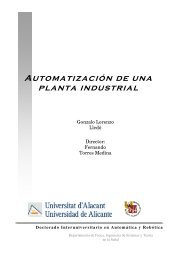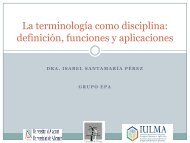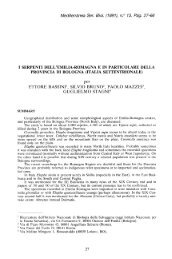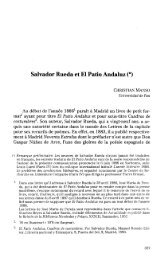ecological effects of marine protected areas empafish project ...
ecological effects of marine protected areas empafish project ...
ecological effects of marine protected areas empafish project ...
You also want an ePaper? Increase the reach of your titles
YUMPU automatically turns print PDFs into web optimized ePapers that Google loves.
EMPAFISH Booklet no. 1 Ecological <strong>effects</strong> <strong>of</strong> Atlanto-Mediterranean MPAs in the EU<br />
remote sensing, <strong>marine</strong> circulation modelling, tagging, including external<br />
(natural or artificial), chemical (trace elements or stable isotopes in otholiths)<br />
or genetic (Pérez Ruzafa et al. 2006) methods, and Geographical Information<br />
Systems (GIS).<br />
1.3 The importance <strong>of</strong> habitat structure<br />
The habitat <strong>of</strong> an organism can be intuitively defined as the place where it<br />
lives and which provides food, shelter and living space to the organism<br />
(Chabanet et al. 2005). More formally, a habitat can be defined as a spatiallybounded<br />
area, with a subset <strong>of</strong> physical and biotic conditions, within which the<br />
density <strong>of</strong> interacting individuals, and at least one <strong>of</strong> the parameters <strong>of</strong><br />
population growth, is different than in adjacent subsets (Morris 2003). Habitat<br />
must be defined in relation to the species and populations <strong>of</strong> interest, and in a<br />
manner that reflects underlying processes operating at appropriate spatial and<br />
temporal scales.<br />
Potential habitats for a species (at a given spatial scale) vary with respect to<br />
both quality and quantity <strong>of</strong> available resources (food, refuge, etc.), predation<br />
risk, or resource requirements by organisms from the same or different<br />
species leading to competitive interactions. Therefore, the question to address<br />
is: what habitat features are relevant for these organisms and what are the<br />
<strong>ecological</strong> functions provided by these features, which are to be measured<br />
and, ultimately, <strong>protected</strong> (García Charton et al. 2000). The concept ‘habitat’<br />
encompasses not only the substratum (rock, sand, etc.), but also habitat<br />
‘formers’ (e.g. coral reefs, seagrass meadows, gorgonians, vermetid reefs,<br />
maërl beds, or macroalgae); moreover, habitat ‘determiners’, i.e. organisms<br />
able to modify the physical structure <strong>of</strong> habitat by their individual activity<br />
(e.g. by grazing, scratching, scavenging), should be considerded.<br />
In studies <strong>of</strong> habitat structure, the distinction is <strong>of</strong>ten made between habitat<br />
complexity – the absolute quantity <strong>of</strong> each element type, which represents<br />
the degree <strong>of</strong> variation in the orientation <strong>of</strong> the three-dimensional surface per<br />
unit <strong>of</strong> seabed area (vertical component), and heterogeneity – variation<br />
attributable to the relative abundance <strong>of</strong> the different structural elements <strong>of</strong><br />
habitat (horizontal component), at each spatial scale <strong>of</strong> interest (García<br />
Charton & Pérez Ruzafa 2001; García Charton et al. 2004).<br />
Marine habitats can be classified according to the <strong>ecological</strong> function they<br />
provide (e.g. habitat for spawning, recruitment, nursery, etc.). Futhermore, a<br />
particular organism can occupy different types <strong>of</strong> habitat during the day (e.g.<br />
for resting and feeding), and particularly at different stages <strong>of</strong> their life cycle.<br />
On the other hand, habitats can be described at different spatial scales <strong>of</strong><br />
observation, which will also depend on the organism <strong>of</strong> interest (García<br />
Charton et al. 2000; Chabanet et al. 2005).<br />
Marine habitats are being altered by physical disturbances <strong>of</strong> human origin<br />
(coastal works, dredging, dumping, spilling, trampling and other tourist<br />
impacts, trawl fishing, anchoring, etc.), which generate a variety <strong>of</strong> negative<br />
<strong>effects</strong> (siltation, occupation <strong>of</strong> the coastal fringe, destruction <strong>of</strong> erect<br />
3


